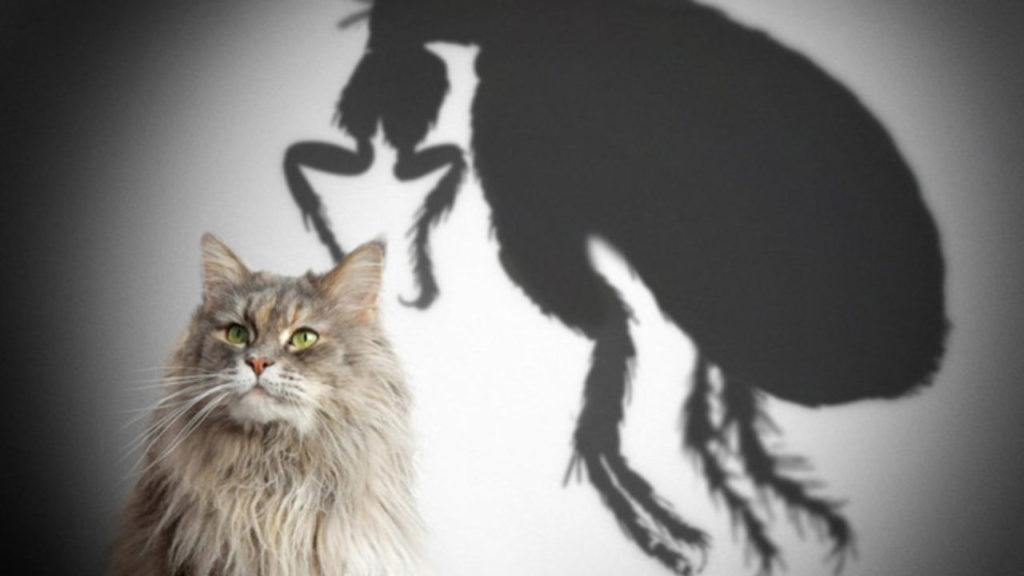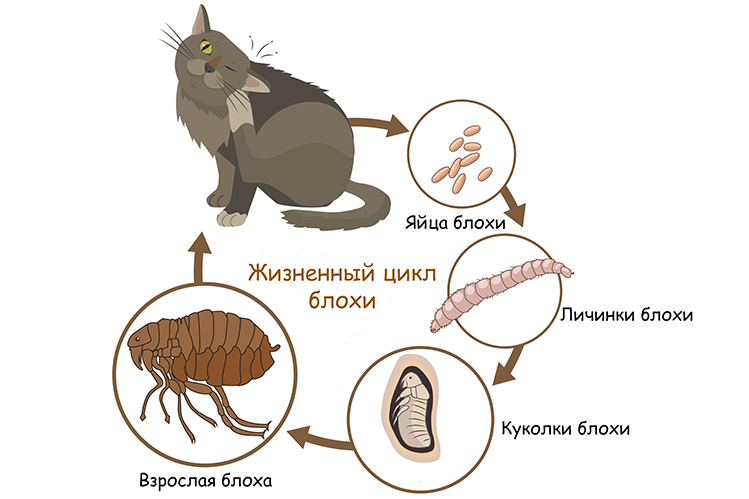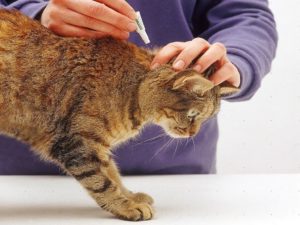Fleas are considered the most common of all the existing parasites for cats, dogs, and rodents. One can only envy their endurance, vitality, and resourcefulness. Fleas on a cat are unpleasant for the owner and dangerous for the animal itself. Wounds formed after a pet’s constant scratching of parasite bites become entry points for infections. This can lead to severe dermatitis and allergic reactions with consequences such as swelling, severe itching, and fever. Kittens, as well as weakened or elderly cats, may become anemic if they have a large number of fleas. In addition, by accidentally swallowing a “bloodsucker,” a cat risks becoming infected with helminths. So, how to get rid of cat fleas?

Fleas are parasitic wingless insects 3 mm long, belonging to the blood-sucking order. Their oral apparatus allows them to easily bite through not only the skin of any mammals but also tough fur. Like all insects, these parasites have six legs covered with spines. The most potent fleas have a pair of hind legs, thanks to which they can quickly jump over distances of half a meter (equivalent to 200 m for a person).
Where do fleas come from?
In an unfavorable environment, fleas sleep, but unlike ticks, they do not lose their activity all year round. When a “victim” appears nearby, they immediately wake up and move towards a new host. These tiny insects live outdoors (on the ground, in the grass, in the snow) and in the entrances and basements of houses. Striving for warmth, they live next to heating mains in winter. The main goal of these tenacious parasites is to move into human housing with domestic animals, where ideal conditions await them for reproduction.

One flea can lay up to 400 eggs in a cat’s fur daily. Since the eggs do not have adhesive properties, when the pet moves, they quickly fall onto the floor, carpet, sofa, or folds of linen, transforming into larvae. Even though the life cycle of fleas is 14 days, they are in no hurry to leave the cocoon if there is no food item nearby. They are waiting for the right moment. The most favorable factors for developing eggs are humid air and unsanitary conditions. Therefore, they often grow in gaps on the floor and behind baseboards.
Signs of fleas in cats:
- Frequent and severe itching. Fluffy behaves restlessly, constantly licking himself and biting into the skin to catch the ectoparasite.
- The appearance of black or white spots when combing. If you comb a cat placed on a clean sheet of paper, you will see tiny black grains falling off it. This is flea excrement that fleas feed on if no food source is nearby. If you drop water on them, their color will change to reddish. The white dots are flea eggs.
- The presence of fleas themselves. Parasites are the easiest to spot. Their bodies are flattened on both sides, which allows them to crawl quickly in wool. Most often, insects live in the neck and chin area.
- Damage to the skin. Minor wounds, abrasions, or scratches appear on your pet’s body, or you notice pale mucous membranes.
- Deterioration of coat condition. The skin and coat are severely stressed, which can cause the skin to lose its healthy shine and fall out.
- Allergic reactions. Once infections enter infected bite wounds, allergic reactions may develop. In particularly advanced cases, abscesses, purulent wounds, or fistulas can be found.

If you notice one of the listed signs in your cat, do not hesitate to take action. If measures are not taken to eliminate several insects promptly, they can become a colony of “bloodsuckers,” causing more anxiety in the purrs and their owners.
How to Remove Fleas from a Cat: 5 Steps
Removing fleas from a pet is a simple procedure, especially at the early stage of infection. You need to choose the right products and follow these steps to eliminate parasites:
- Bathing. First, you will need an anti-parasitic shampoo to wash your pet thoroughly.
- Animal handling. 2 days after bathing, the cat and all other pets in the apartment are treated for fleas with a particular product, which can take the form of a spray, collar, tablets, or drops on the withers. The most effective remedy is considered to be easy-to-use drops. It is essential to avoid making a mistake with the dosage, which is determined based on the pet’s weight. As for the collar, it makes sense to put it on your pet if the insects have already been bred since it only protects against new fleas. In case of increased skin sensitivity or allergies, it is advisable to use tablets.
- Treatment of cat beds. In addition to the pet itself, it is essential to treat the places where he often spends his time (bed, carpets, furniture, etc.). Using a unique aerosol, you can exterminate both adults, pupae, and larvae.
- Deworming. Since fleas carry helminth eggs, it is necessary to eliminate internal parasites after fighting external ones.
- Prevention. Repeated use of a particular product is guaranteed to rid your animal of fleas. However, it is essential not to overdo the dosage and not combine several protective measures simultaneously, as this can harm the cat’s health.

If you cannot decide on the choice of anti-flea products, contact your veterinarian for professional help.
Video: how to get rid of fleas on a cat




